Toyota Avensis Touring Sports D-4D
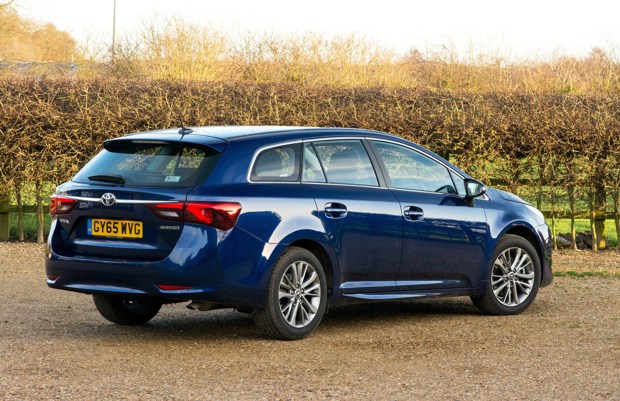

Voluminous Avensis estate joins the fleet
Dan wants a car that’ll happily dispatch motorway miles, has a load area that will tackle almost anything you can throw at it...
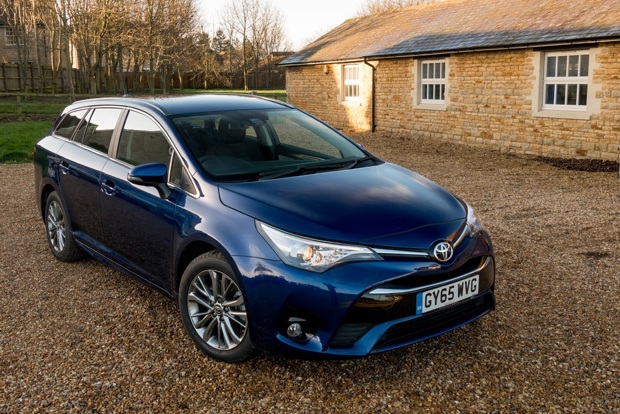
Date: 15 February 2016 | Current mileage: 312 miles | Claimed economy: 61.4mpg | Actual economy: 52.3mpg
Large estates are among my favourite types of cars. Of course, like anyone I enjoy driving sleek coupes and cool convertibles, but when it comes with living with a car day-to-day, this is the type of car that mosts floats my boat.
Granted, it won’t necessarily get the blood pumping or turn heads out on the road, but that’s precisely the point. Comfortable, easy to live with and restrained. I want a car that’ll happily dispatch motorway miles, has a load area that will tackle almost anything you can throw at it and returns decent fuel consumption. In short, a car you don’t really have to think about.
Plus, as I’m moving house and dealing with the boxes, rubbish and lugging that comes with it, I’m more in need of a car that’s a real workhorse than ever. That’s why I’m really looking forward to living with this Toyota Avensis Tourer. I’ll be with it for the next year and if it’s as dependable and practical as I’m expecting. It could end up feeling like part of the family.
The Avensis Tourer isn’t as common as the saloon, but it gets the same range of engines. Unlike many of its competitors, Avensis has always had a fairly compact range of engines. That focus on simplicity is still the case with this generation, where both the saloon and Tourer are offered with 1.8-litre petrol and 1.6-litre and 2.0-litre diesel engines. Gearboxes are a six-speed manual, six-speed automatic and seven-speed stepped Multidrive S CVT.
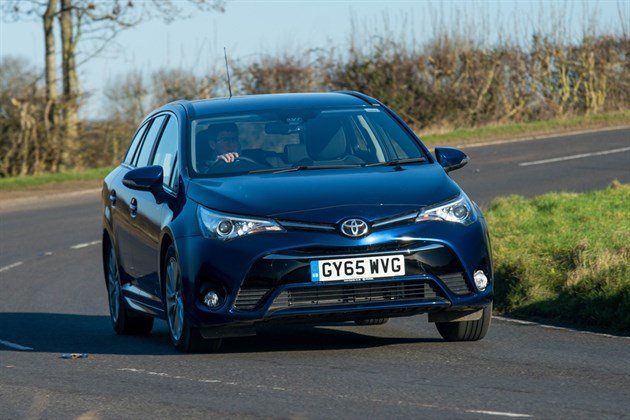
The Avensis - practical rather than exciting
I’ve gone for the middle option, the 2.0-litre D-4D with a six-speed manual gearbox. This engine has a great balance between power and economy. On paper it will return a combined figure of 61.4mpg (we’ll see how that compares to my real life driving and Real MPG), power of 140PS and 320Nm of torque.
No-fuss shouldn’t mean no-frills, which is where this Avensis comes into its own. This is a Business Plus edition, created especially for the company car market (which is why the emissions are a tax-friendly 120g/km) and the specification is designed to be appeal to fussy user-choosers. So, that means there’s an impressive list of standard equipment, including DAB radio, Toyota Safety Sense, satellite navigation, bluetooth, rear-view camera and 17-inch alloy wheels.
This is a well equipped car, so aside from the striking Orion Blue metallic paint, I haven’t opted for any options. I’ve always been a believer in keeping things simple and why specify a load of expensive options that you’re either not going to use or use only very occasionally? Popular options and accessories on the list include dog guards, park assist and roof racks. There’s even a ‘hotspot’ on offer for £350, which creates a wifi hotspot in the car that you can connect laptops, tablets and phones on the move.
As I alluded to at the start, this is a car that’s all about practicality - it’s what makes it a sensible choice for families and for people who need a large car for work - surveyors and the like. Open the tailgate and there’s 543 litres of of boot space, which can be increased to 1609 litres when the rear seats are folded flat. In addition, it’s low to the ground which makes loading easier, features underfloor storage areas and has tie-down hooks and loops for securing bulkier loads.
The on-the-road price for this 2.0-litre D4D Business Edition Plus Tourer is £26,630, plus £495 for the metallic paint. Although that may sound on the pricey side, considerable discounts are on offer. Brokers can supply a car from a Toyota dealer for under £20,000 - with saving of more than 21 per cent more than common. Go used and even bigger savings are on offer - expect to pay around £15,000 for a 2015 Avensis with low mileage from a dealer or around £14,000 if you can find one privately.
Practically pitch-perfect
Despite the rise-and-rise of the crossover in recent years, it’s hard to overlook the practicality of the good old fashioned family estate.

Date: 15 March 2016 | Current mileage: 756 miles | Claimed economy: 61.4mpg | Actual economy: 47.1mpg
Despite the rise-and-rise of the crossover in recent years, it’s hard to overlook the practicality of the good old fashioned family estate. And although Toyota may insist on calling this version of the Avensis a ‘Touring Sports’, it’s an estate to me. In fact, I feel rather daft using the Touring Sports name.
Cars like the Hyundai Tucson and Nissan Qashqai offer that magic formula of Practicality+High Driving Position+High Value, which has meant that many buyers have ended up overlooking more traditional estates. Added to that is that the latest generations of crossovers have got larger, smarter and more flexible.
But buyers who overlook traditional family estates in favour of more ‘on-trend’ crossovers are doing themselves a disservice. Take this Avensis. As I mentioned in my previous update, it’s surprisingly good value. It can be picked-up with a 20 per cent discount, sliding in at under £20,000. It’s well equipped with DAB, navgation and has a five-year warranty. Even with a decent discount factored-in, a similarly equipped Tucson will come in at around £25,000 and the Qashqai isn’t far behind.
So, it’s clear that there’s a decent saving to be made, but it scores on the practicality, too. On paper, it’s impressive with 543 litres with the seats up and 1609 litres with them folded down. Again, that compares favourably with the two crossovers, with the Tucson coming in at 488/1478 litres and the Qashqai 430/1585. In addition, as it’s a cube shape, the boot space (with the seats up) is more usable. Crossovers tend to be taller and shallower, which means you’ll be folding the seats down flat a lot more than you may have planned. And the boot lip is lower to the ground, making it easier to load and unload.
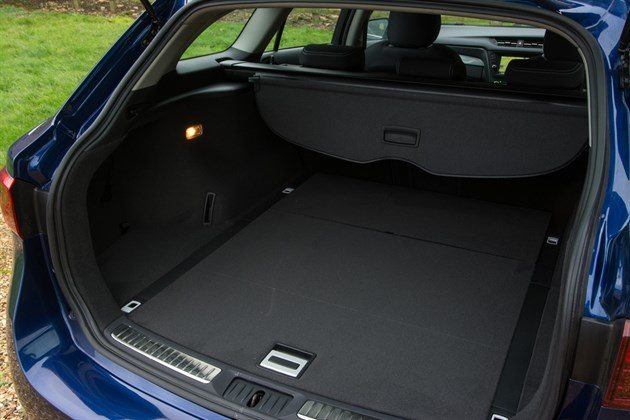
That load area really is useful for large loads and the rear shape of the Avensis does a good job of disguising it. It looks sharper and more svelte than before, but the load area is just as good. That’s really come into its own for me on the past few weeks as the Avensis has been pressed into house moving duties, where it has performed admirable.
Much of our stuff was packed into 64-litre RUB (Really Useful Box) boxes. They’re the hard plastic boxes that can be stacked on top of each other. The reason for that is that we’d had to store much of our things before moving and this was the easiest way to make sure everything stayed dry, safe and made the most of storage space.
The bulk of the moving was done by van, but the Avensis did a good job of shifting those RUBs. Capable of carrying eight at once, the Avensis was a reliable workhorse for transporting fragile items or if we wanted to move smaller amounts of things out of storage. In addition to the sheer space, the well-damped suspension absorbs lumps and bumps in the road and insulates the boxes from the shocks. Particularly important for us, as our new house is at the end of a farm track, as far removed from from smooth tarmac as you can get.
That’s not where the practical touches end, however. The cabin is packed with storage areas, seat pockets and a big air-con cooled glovebox. Underneath the carpeted load cover, there are also decently-sized compartments for keeping items out of view. It also houses a spacesaver spare wheel - but that’s another update for another day.
Where have all the big estates gone?
The Avensis Touring Sports appears to be part of a dying breed - the large family estate. Where have they disappeared to?
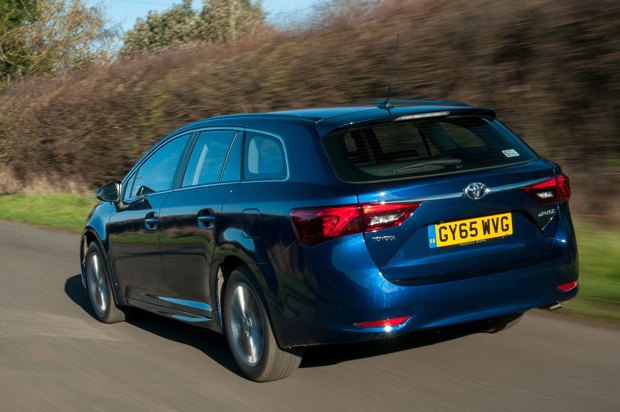
Date: 19 April 2016 | Current mileage: 1478 miles | Claimed economy: 61.4mpg | Actual economy: 48.9mpg
We’ve been keeping a beady eye on a trend that’s been developing over the past five to ten years and that’s the curious case of the disappearing large family car and estate. Turn the clock back just slightly and there was one in the line-up of every serious manufacturer. Honda had its Accord, Renault’s was the Laguna while Nissan sold the Primera with a choice of three bodystyles. Gone, gone gone.
So where have these buyers been going? For the large part, it’s quite simple - they’ve become crossover owners. Remember in the mid-2000s, when it was announced that Nissan would no longer be building the Primera in the UK?
When it was announced that it would be replaced with a funny model called the Qashqai, it appeared to be a kick in the teeth for the Sunderland plant. But that couldn't have been further from the truth - not only is it a regular fixture in the top 10 monthyl sellers, but it has been an export success. It also created a new breed of cars and redefined the way we think about family cars, prompting copycat models from other mainstream manufacturers.
And now the focus moves onto those that could be going. Sales of the Peugeot 508 and Citroen C5 have been falling for years. Will they be replaced? Probably not. Then there’s big names like the Ford Mondeo and Vauxhall Insignia - even they’re not selling in the same numbers they once did. In 2015 the mighty Mondeo was outsold by both the BMW 3 Series and Audi A4 - confirmation, if it were needed, that if buyers aren’t buying an SUV, then they’re buying premium.
Which brings us back to the Avensis. This was once a big name, not only in Toyota’s line up, but also as an alternative to Mondeo and Insignia. This is the car that was originally launched with an Iggy Pop soundtrack. On the site, we’ve seen searches for Avensis fall from first or second for Toyota to behind Yaris, Auris, RAV4 and Prius.

The Avensis has been built at Burnaston since it was launched in 1997
The interest is still there, but it’s clear that it’s not as strong as it once was. It’s reflected in UK sales, too. Between 2000 and 2007, Toyota never sold no ewer than 20,000 Avensis a year, reaching a peak in 2004 of 26,000 cars. Since then, numbers have fallen dramatically, dipping below 10,000 in 2011 and 6000 in 2013. This year is likely to be the same.
That pattern has been replicated in Europe, with a peak of 142,000 cars falling to 33,000. That raises questions about the Burnaston factory in Derbyshire where both the Avensis and Auris are made. It would appear to be in a similar position to Nissan’s Sunderland plant in the mid-2000s. It’s an efficient, modern factory that’s producing a model slotted into a declining market.
I don’t think there’s much of a question over the factory’s medium-term future, as Toyota’s chief executive Akio Toyoda has told the Financial Times that he can see the the factory to still be operating in 2090: "From now on, like Japan, we may face some pretty tough times in the UK market, but we want to deepen our roots to deliver even better cars, so that when that capsule is opened after 100 years, all can see we've built a truly British company.”
The question is rather what will be built and for whom. Toyota has already launched its Qashqai alternative, the C-HR crossover, so it won’t be that. But with Auris and Auris Hybrid both produced there, could it become the hub for small cars and potentially could do more with hybrids and/or electric cars? This is all speculation, of course, but with new Avensis launched in 2015 and operating on a seven-year life cycle, I would expect an announcement within the next 18 months - sooner if it was decided to end Avensis production early.
There’s also the potential at the plant for exporting outside of Europe. Currently the Avensis Tourer - which I’m driving - is the only Toyota to be sold in Japan that’s made outside of Japan. That’s quite an accolade.
So... what's your view?
When it comes to our Avensis Touring Sports how do the views of owners compare to my own?
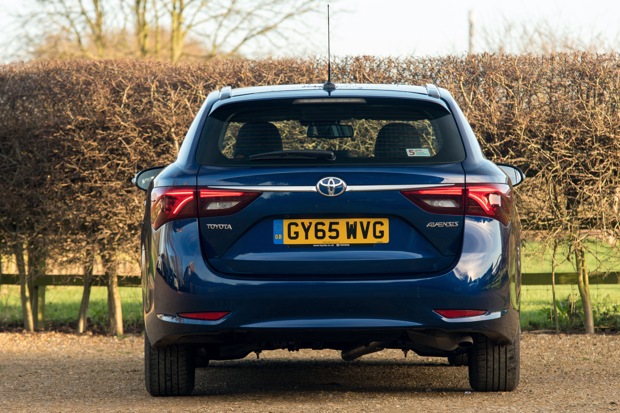
Date: 18 May 2016 | Current mileage: 2890 miles | Claimed economy: 61.4mpg | Actual economy: 47.2mpg
Every time I take on a new car, I always take a look at what owners say in our Owners’ Reviews section. After all, that’s what thousands of car buyers do every month before making their own decision.
It’s a great way of getting a rounded impression of what a car is really like. One review might be completely glowing, whereas another might be super critical, but when viewed overall - and with other reviews - it gives an accurate insight into the good, bad and ugly about a car.
That’s a bit trickier this time round, as this is a relatively new model and we’re still looking for owners to give us their feedback. There have been a handful of opinions submitted, but it’s still far too early to base any assumption on what has been said.
So, what do owners like so far?
“Styling is sharp although not quite in same league as BMW or Audi but list of extras more than compensates.”
“Decent sound system with effective sat nav. Good size Touch & Go screen with reversing camera (wouldn't own a car without one now). Auto headlights and windscreen wipers worked well."
“Massive boot. We have two kids (kid seats). Loads of space.“
“Seats very comfortable. Good driving position. 140PS engine quick and diesel responsive. Handling sharp, firm grip on corners and limited roll. Slight feedback on pedals when revved hard.“
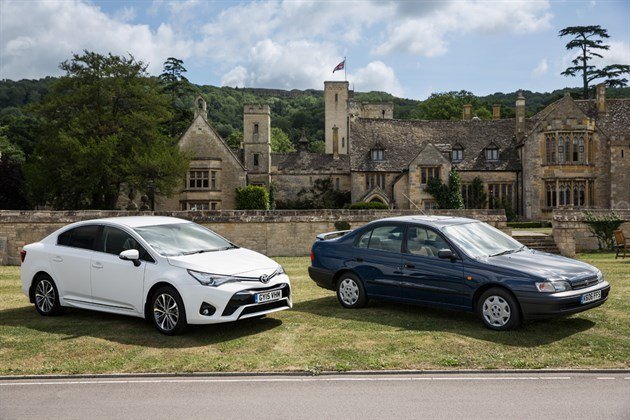
The latest Avensis is proving popular with owners
It’s a qualified thumbs-up so far, with owners reporting no major issues. The sat nav point above is an interesting one. Toyota has gone for a simple touchscreen system with the Avensis. There’s no mouse or pointer and the on-screen buttons are large and easy to use on the move. It’s a different approach to what it has done in some of its more upmarket models, but it’s all the better for it. It’s simple, intuitive and, while it may not be the snazziest system, or have the most exciting graphics, it’s easy to get to grips with and the directions/map are easy to digest while on the move.
It’s also clear that buyers and owners see the five-year/100,000-mile warranty - which is available on all new Toyotas models - as a key feature. This isn’t a new gimmick, it’s something that Toyota has really invested in - having been standard on all new cars since June 2010. We've seen that for owners, this often makes the difference between buying a Toyota and something else.
The same is also true of Kia and Hyundai, which offer five and seven year warranties respectively. A question that we’re regularly asked is: “Which car can I buy that has a long warranty?” Knowing that there won’t be any unplanned repair work remains one of the key considerations for our readers when buying a car.
You may remember that the extended warranty was introduced partly as a response to a string of recall announcements both in the UK and in the US - recalls that have now been proven to have been largely been blown out of proportion. Since then there have only been seven recalls across all generations of Avensis - that’s the best part of 300,000 cars. Toyota has always had a well-earned reputation for reliability and it would seem that the recalls of six years ago have not done long term damage to that.
Choosing an Avensis as your next car - what are its strengths?
How does the Toyota stack up against alternatives when you're drawing up a shortlist of cars to buy?
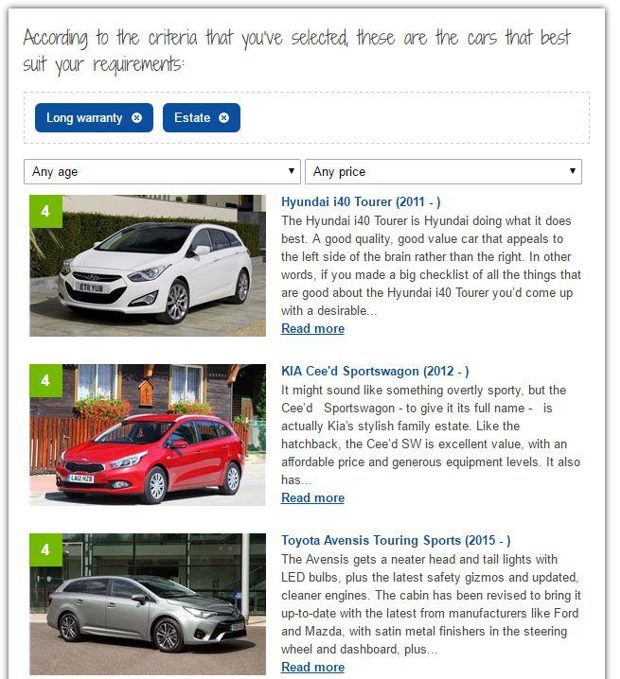
Date: 22 June 2016 | Current mileage: 2890 miles | Claimed economy: 61.4mpg | Actual economy: 48.4mpg
We’ve recently launched a brand new tool to help you choose your next car. You won’t find anything like it on any other motoring site and we’re rather proud of it.
We’ve analysed tens of thousands of questions that have been submitted to Honest John over the years to boil-down the most asked phrases people use when choosing a car. We’ve then matched those to hundreds of different models.
The idea is that by simply picking a few key phrases - those that are similar to what has been asked in the past - you will be shown a list of cars that match what you’re looking for. Kind of second-guessing what you had in mind...
There’s a lot to recommend about the Toyota Avensis Touring Sports, so there’s a long list of associated ‘tags’. When you use Chooser and click ‘estate’, you’ll be shown 53 different estates that match that search. Everything from small-car based models like the SEAT Ibiza ST through to the Mercedes-Benz CLS Shooting Brake - plus everything in between. Overwhelming, right?
That’s why we offer several further levels of refinement. Punch in details of your budget or the age of car you want (new/used) and that list diminishes quickly. Alternatively, you can pick a few more items that you’re looking for in your next car.
We’ve given every car a list of attributes that will match searches. In the case of Avensis, we think it’s particularly strong when it comes to comfortable seats, great levels of equipment and cruising on the motorway. Against that criteria, the Avensis Touring Sports is featured in a list with the Ford Mondeo estate, Volvo V90 and Skoda Superb estate.

Come at it from the perspective of value for money - by putting in estate and long warranty and you’ll see that it’s in with its Auris stablemate plus Kia And Hyundai offerings like the i40. Then there’s the British-built angle. We’re often asked about cars that are built in the UK and there’s probably more Brit-built estates than you think.
As well as Avensis Touring Sports, selecting “estate” and British-built” will return Honda Civic Tourer, Jaguar XF Sportbrake, Vauxhall Astra Sports Tourer, Auris Touring Sports and the MINI Clubman (the closest MINI gets to having an estate).
You could come at it from another perspective again. Chooser is designed to be flexible, so you don’t have to select a bodystyle at the start. After all, a big hatchback or chunky crossover might do the job just as well. Choose fold-flat seats along with wide-opening doors and you get a different mix of cars altogether, with Ford S-MAX and Ford Edge putting in an appearance. Make sure that it still has a large boot and a shortlist of 53 cars is soon whittled down to just 13, including the Avensis Touring Sports, of course, which matches all of those criteria.
The Avensis Touring Sports has many admirable qualities, which is clear from the volume of Car Chooser searches that it crops up in, majoring on being highly practical, good value and reliable. Seeing it among the company of other cars that match your own personal criteria gives you the chance to consider different models by what appeals to you, rather than starting off from pre-defined routes like price or bodystyle.
So, how do you think about cars when you’re in the market to buy? Facts and figures or something you can’t quite place your finger on? Whichever way it is, Car Chooser can generate the longlists you need to get to your shortlist.
Petrol or diesel? How do the figures stack up?
Our 2.0 D-4D Avensis is certainly economical but would a petrol have been better? We look at the facts behind choosing a petrol or diesel.
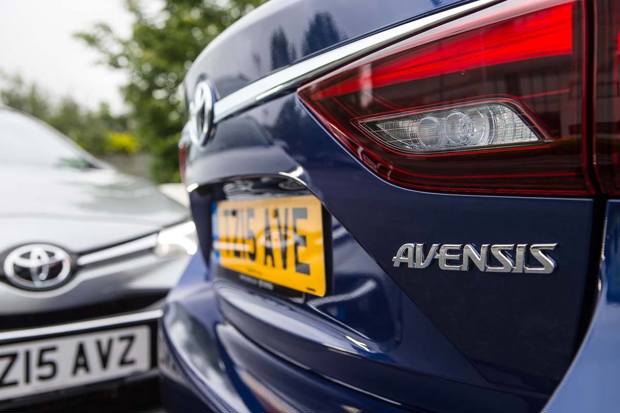
Date: 19 July 2016 | Current mileage: 3879 miles | Claimed economy: 61.4mpg | Actual economy: 47.5mpg
The Avensis Touring Sports comes with a choice of three engines: two diesel and one petrol. The diesels are a 1.6-litre and 2.0-litre with 112PS and 143PS respectively, whereas the petrol is a 147PS 1.8-litre. This compact range of engine is simple to understand, but always poses a questions - should I go for petrol or diesel?
This can often lead to some trite responses along the lines of, "the diesel is more economical, but more expensive to buy, but the petrol is cheaper though economy isn’t as good." Errrrr, big help, thanks. It’s a question that deserves better than a trite response, as fuel costs are a huge part of the car buying conundrum. The past 18 months or so have seen a big fall in fuel prices - down as low as £1/litre relatively recently - but we all know that can’t last forever. As prices rise, so will the need for getting the most out of every drop - whether it’s a litre or gallon.
So, how do you work out which is best for you? It’s a massive headache. You need to know how many miles you cover, the fuel capacity of the car, official fuel figures, conversion equations from litres to gallons plus the cost of the fuel itself. And, even if you have the patience to work this out, you’ll be left asking - but what about its Real MPG?
Thankfully, we have a little tool that takes the misery out of working it out, our Petrol or Diesel? Calculator.
Initially I’ve pitched the 2.0 D-4D (priced at £26,135) against the 1.8 Valvematic (priced at £24,295). Both are Business Edition Plus models, the same as my car. The pricing is important. Diesels tend to carry a significant premium over their petrol counterparts, which has a big knock-on effect on how far you’ll have to drive before it breaks even.
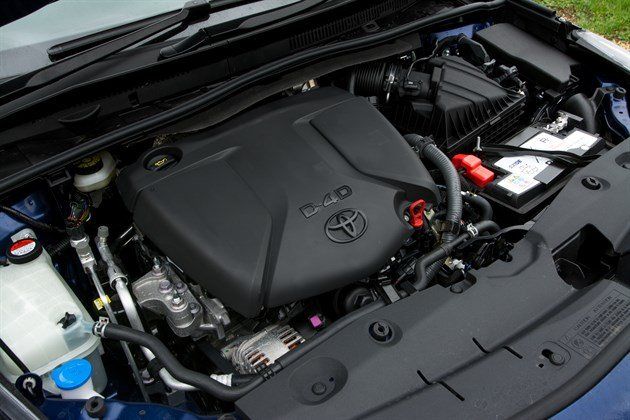
What would be more cost effective for you - petrol or diesel?
With the Avensis, there’s a fairly hefty difference of £1800, though this is actually at the lower end of premium scale. Our calculator shows that it will take just under 42,000 miles (1528 days) to break even and - on an annual mileage of 10,000 miles per year - will recoup its cost at a rate of £439 per year.
However, this is based on the official fuel consumption of 61.4mpg. Readers report to Real MPG so far that fuel economy is at the 42.9mpg level. That works out at 71 per cent of the official figure, which for the purposes of this comparison could make quite a difference to how long it takes to recoup the cost. It’s made even harder because of how the 1.8-litre is currently performing, according to users submitting to Real MPG. With a rating of 41.7, it’s achieving 91 per cent of its official figure, which is rather impressive.
That has a serious knock-on effect on the calculations. There’s no effect on the initial extra cost of £1840, but going on Real MPG figures the annual savings are slashed from £439 to just £173. It means that number of days to break-even rises to a whopping 3877 and you’ll need to cover 106,225 miles in the D-4D to make it pay. Even if you’re covering 20,000 miles a year, that’s still more than five years before the diesel option has paid for itself.
The 1.6-litre diesel does better, though it is significantly less powerful. There isn’t such a big up-front premium, which means it wipes its face after about a year and half and 15,000 miles officially. Or 22,000 miles and 803 days according to real MPG.
Side-by-side comparison of the two diesels reveals that whether it’s official figures or Real MPG, the 1.6D-4D always comes out on top, largely thanks to the fact it’s £1000 cheaper to buy initially and has an annual saving of £87 (or £209 with Real MPG).
Six months in: how does the half term report card read?
What's life like with our Toyota Avensis Touring Sports after half a year? It's time for a half term report...
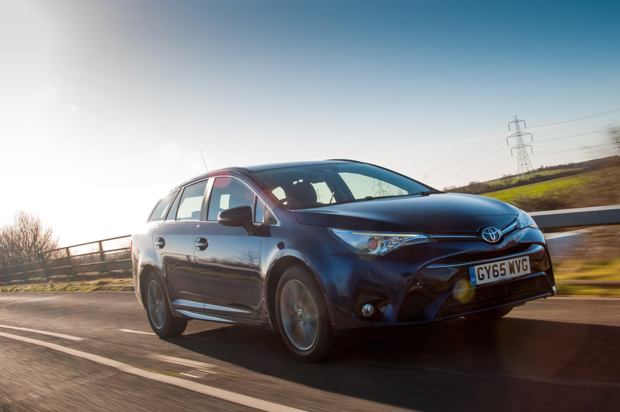
Date: 16 August 2016 | Current mileage: 4367 miles | Claimed economy: 61.4mpg | Actual economy: 47.4mpg
I've already gone into some detail about the decline of the big family estate. While more premium offerings like the BMW 3 Series Touring and Audi A4 Avant continue to find plenty of buyers, mainstream models like the Avensis have been left behind. I just don't get that.
In the past six months, the Avensis has done everything that's been asked of it, without fuss or fanfare. If you're after practicality and no-nonsense dependability, then this is your car. It's a comfortable drive, too. Whether on A-roads, B-roads or motorways, it’s quiet, has a compliant ride and does a remarkable job of soaking up lumps and bumps.
That means long motorway jaunts aren't something to be dreaded. At 70mph, the cabin is remarkably quiet and refined, with wind, engine and road noise well suppressed. Throw in supportive seats, decent all-round visibility and that practicality that I've rattled on about before and you can see why this car is bought by those who want something smart, practical and drive mega motorway miles, people like surveyors who need to carry lots of kit that’s awkwardly shaped.
That's not to say the 2.0-litre D-4D doesn't have a bit of poke when it's needed. It does. It's the height of the farming season out where I live, so the roads are full of tractors, combined harvesters and crop sprayers. When needed, the Avensis switches from cruiser to an able charger. There's plenty of oomph there for overtaking and with maximum torque of 320Nm from between 1750 and 2250rpm, which is accessible enough to make light work of dispatching farm machinery and other slow-moving traffic.
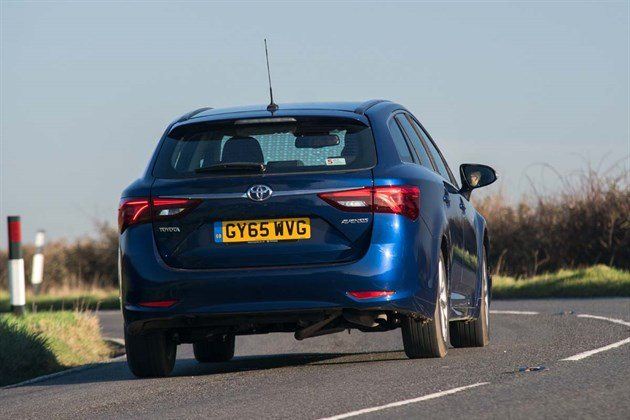
Avensis has plenty of power thanks to 2.0 D-4D engine
Complaints from the back have been few and far between, too, The seats are supportive and Toyota has gone for a conventional estate shape, which means that the interior packaging is spot-on. Other models with a swooping shape to the rear may look more dynamic, but they rob the interior of much-needed space. That’s certainly not the case with the Avensis, where there’s plenty of headroom and decent legroom. The seats are supportive too, making longer trips comfortable.
Now that I’ve got a few thousand miles under my belt, I’m getting a good idea of fuel economy as well. Real MPG shows the Avensis 2.0-litre D-4D is averaging 47.1mpg, or 78 per cent of the official figure. That’s spookily close to my figure, which is a pretty even mix of town, B-road and motorway driving. I’m averaging around 47.9mpg - though that figure has been climbing. On longer motorway runs, it does top 50mpg and sometimes a little higher, but I’ve yet to get close to the official figure of 62.1mpg.
I think it’s now established that the official figures bear little relation to what happens in everyday driving, which is why the current test is set to replaced within the next few years. It actually does the Avensis and it’s 2.0-litre D-4D a dis-service. That kind of figure for a car of this size and capacity is really rather good and, looking over the Real MPG figures of similar cars, the disparity between the official and real figures is pretty consistent. With warm temperatures over the course of the summer - some days have hit 30 degrees and above - the air con has been on nearly all the time, which has no doubt hit that fuel economy figure. As summer turns to autumn, and the air con is used less, I’d expect it to improve slighty.
Other highlights during my first six months are the driving position, which is not only comfortable, but provides good all-round visibility, the superb - and simple to use - touchscreen navigation system and seamless Bluetooth connectivity for music and phone. The spec of this Avensis is Business Edition and these features make it easy to do that on the move.
